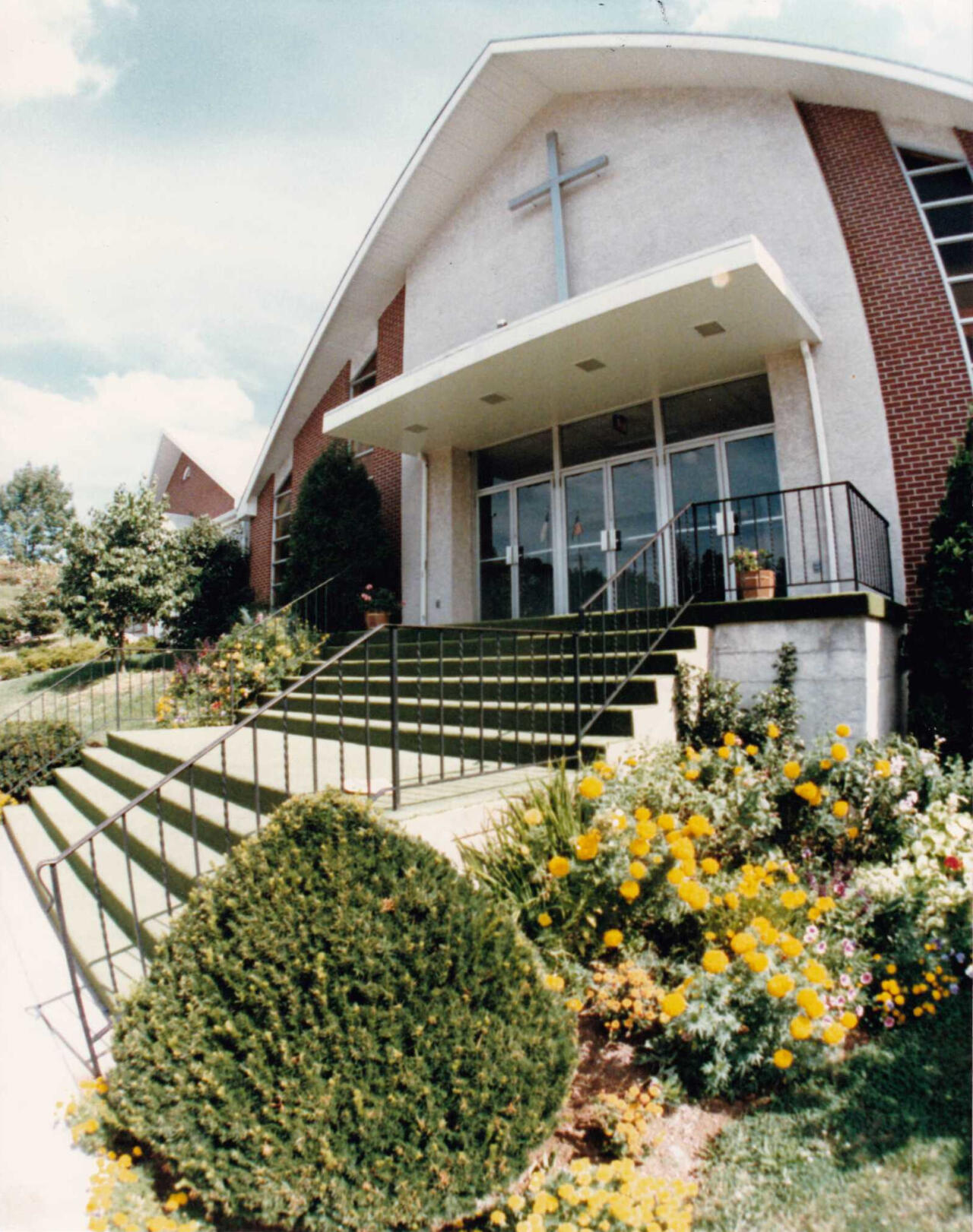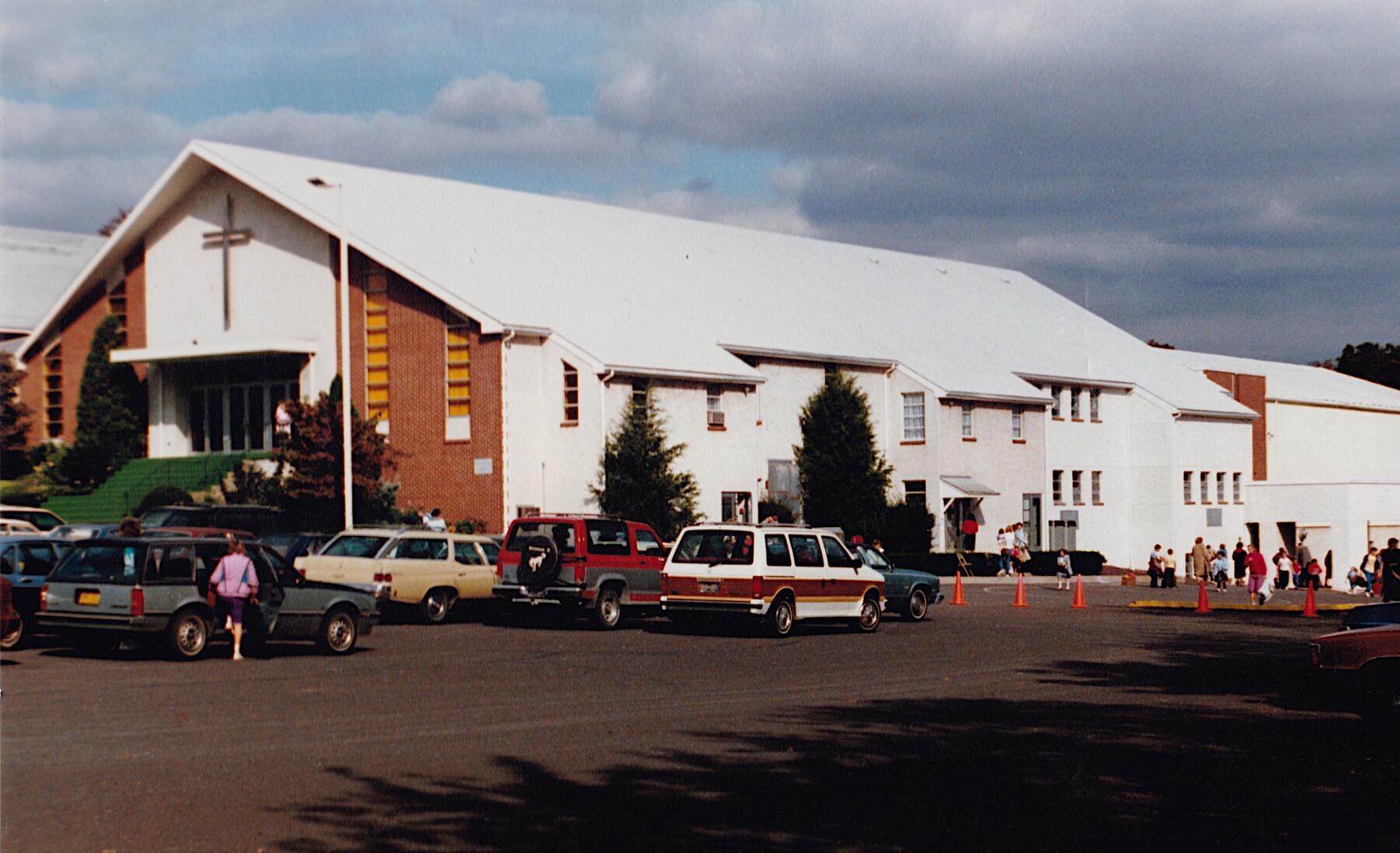FCA Funding
For the next page, FCA Role and Culture, click here. For the previous page, Faith Christian Academy, click here. To jump to the start and the index, click here.
FCA Funding:
The photo below shows FaithBC, the Church that previously owned FCA, the school, and was located on the same grounds.
FCA split from FaithBC in the 2000s. The buildings continued to share the grounds afterwards, but they were now owned by financially and organizationally separate entities.
FaithBC, in particular, ceased to exist as FaithBC and was subsequently known as Faith Church. Paul Auckland, the Head Pastor and de facto CEO of FaithBC, moved on at that point.
The photo below shows the FCA parking lot.
We had recess in the parking lot for most of the time that I was in the Elementary grades. The bus area was kept clear, when not in use by buses, for the purpose.
There wasn't really any playground equipment. No basketball nets, for example, until I was in about 6th Grade.
There was a small playground in back, but I think that it was only for lower-grade Elementary students. Maybe 1st to 3rd grades. But I remember being in the parking lot at that age. So maybe the playground was just for daycare and kindergarten children.
Older children played Four-Square, kickball, or soccer on the asphalt. Hopscotch and Red Rover, too. But after a boy's head was injured in a game of Red Rover and bled seriously, that game was banned.
The boy's whose head bled was Justin Niner, a boy in my class. We didn't like him and were too rough.
We whispered to each other that we should time it so that when he started pushing through the Red Rover line, we'd push back hard. We didn't think of the consequences and felt very bad afterward. And that was the end of Red Rover for that era at FCA.
Exercise was different for 7th to 12th grades. Those grades didn't have recess, but they had the gym and the soccer field in P.E. classes.
We didn't like the cheap nature of the playground – i.e., it was just asphalt – but we got used to it.
Money was tight at FCA in the 80s and 90s. It was due partly to how things were set up.
Some parts of FCA – the Church parts, in particular – were rather extravagant and other parts seemed lower priority or inexpensively done by comparison.
The issue was that, for most of its existence, the school wasn't really fully funded.
Daycare money covered daycare workers and basic supplies. In the older grades, parents paid tuition, which similarly didn't cover much besides teacher salaries and basic supplies.
In fact, the school is believed to have dipped into daycare money at times to help to cover teacher salaries. Daycare was slightly more profitable than tuition, enough to make a difference.
The Church, which owned FCA, had funds. However, Church money rarely went to the school except for structural improvements.
There were many small fundraisers that were intended to fill financial gaps. However, Bake Sales only go so far if you're talking about the money needed to support a school.
In the 1990s, Paul Auckland started a large fund-raising program, Forward by Faith, that was repeated periodically to the point where it seemed to become one of the organization's standard funding processes.
Forward by Faith raised more money than the small fundraisers did, but the money went primarily to, once again, structural improvements. Additionally, the improvements seemed to favor buildings or elements related to the Church.
As one example, the main building at FCA was rather extravagant. The Church-related additions at FCA were like this in general. The bathrooms were an exception. They varied in quality.
Paul Auckland once described the Forward By Faith fundraising program in a way that came across as a little shady.
Somebody who discussed fundraising with Auckland at a dinner meeting gathered from the conversation that Auckland would typically inflate the budget, such as by buying things and doing construction both in top-tier fashion, so that people would feel like they had to give more.
To put it another way, financial stretch goals were institutionalized and made into assumptions. This resulted in increased funding, which was admittedly positive, but not necessarily in a way that was balanced or productive overall.
Editor's note: A financial stretch goal is when you buy things you don't need, or buy top-tier products or services that you could do without or get cheaper.
For the next page, FCA Role and Culture, click here. For the previous page, Faith Christian Academy, click here. To jump to the start and the index, click here.



